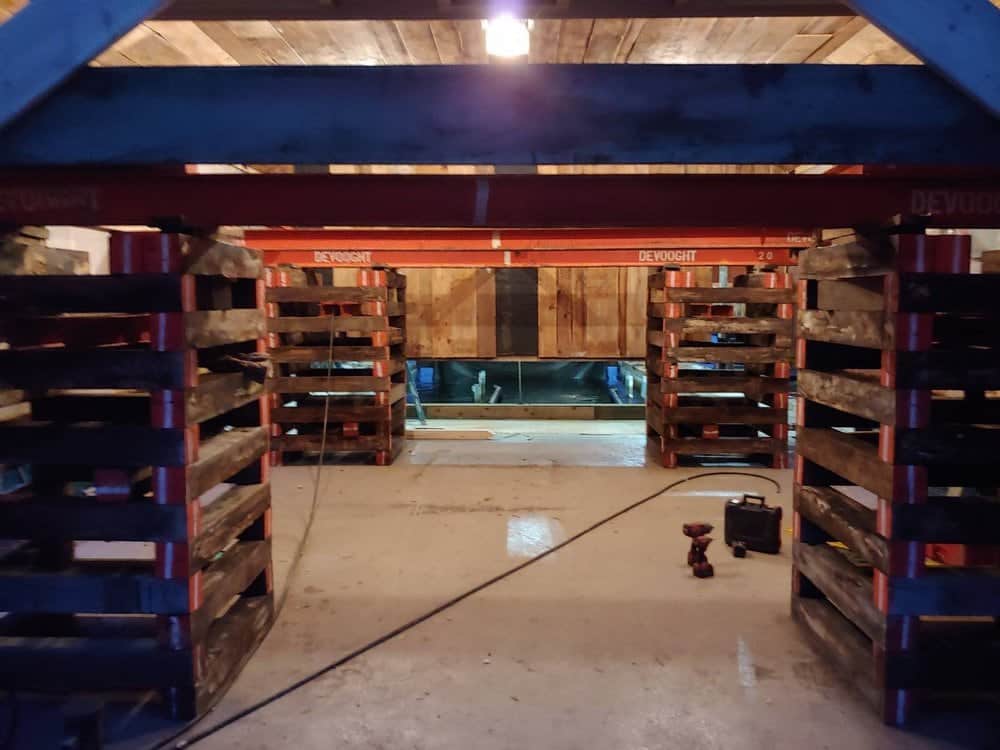Structural relocation requires professional prep, equipment, and resources. This article provides helpful tips for moving or lifting your Ordinary Type III buildings.
What is an Ordinary Type III Building?
Ordinary Type III buildings are often called brick-and-joist structures. They are built with tilt-slap or reinforced masonry walls. Type III buildings are non-combustible: some of the interior structural elements are made with wood or combustible materials, though the walls are not.
Ordinary Type III structures typically contain connected attics or horizontal empty spaces, which makes the fast spread of fire more likely. Many schools, buildings, and homes fall under this construction type.
While you would not lift or relocate a school in the same way you would someone’s home, this guide provides universal tips for moving your Type III structures.
5 Tips for Moving or Lifting an Ordinary Type III Building
These are our top tips for your structural relocation project. Considering these tips will help you plan for a seamless move.
Prep the Space for the Move
You have much work to accomplish before your general and moving contractors arrive. You’ll need to clear all items outside your structure, including yard décor, flowerpots, flags, and other things that can be removed (or damaged during the move.)
If your structure has a basement or crawlspace, you will also need to remove everything from those areas. Additionally, you must disconnect all the electric, gas, and water utilities. Your general contractor can take care of this step for you. This must be done before the day of the lift or move to prevent a halt in your project. Consult with your contractor to determine if you need to contact your utility companies.
Raise the Foundation Level
Many Ordinary Type III buildings are privately-owned homes. Homeowners might choose to lift their houses for many reasons, including mitigating flood risk. Consider lifting well above the 100-year flood levels when you choose a home lift.
Flooding occurrences continue to increase, especially in coastal cities. Raising your Ordinary Type III home above historic flood levels decreases the chance of flood damage to your space.
Additionally, raising your home’s foundation above flood level can save you significantly on your flood insurance. Many insurance companies reward homeowners who lift their homes with lower premiums on their insurance policies.
Lift to Increase Square Footage
Lifting your Ordinary Type III structure can increase your space’s value– and square footage –– of your space. Many property owners choose a lift to add a first floor or basement when there isn’t room to expand horizontally. Additional square footage provides more living space and storage and increases your home’s monetary value.
While moving might be an option for some, many homeowners love where they live. You might be in the same situation: you own your home, love your historic neighborhood, or maybe live on land passed down through your family.
Regardless of why you want to stay in your home, a structural lift allows you to remain on your property –– in your home –– while expanding your living space.
Make Use of Your General Contractor
When you plan a move or lift, you will need to hire a general contractor to assist with some prep before the project and prepare for your new property. Your general contractor will install your new foundation and reconnect utilities after completing the project.
Take advantage of the transition and tackle renovation projects after the move or lift is done. Most Ordinary Type III structures have sprawling attic space. This might be the perfect time to finish the attic and add more usable space to your home or building. Or perhaps you want a deck to relax on your new property.
Regardless of the remodeling or renovation projects you have in mind, post-lift or -move is a great time to do it. Plan accordingly, and you can take care of all your projects simultaneously.
Reach Out to Professional Structural Relocators
Our final and most important tip is to choose the right structural relocation contractor. You should never attempt to raise or move your building or home on your own. Projects like these require heavy-duty equipment, expertise, and a knowledgeable team to execute successfully –– and safely!
You also want to choose a contractor with experience moving Ordinary Type III buildings. Your building or home is likely one of your most valuable assets. You don’t want to cut corners to save a few dollars when this investment is on the line.
DeVooght House Lifters brings professionalism, expertise, integrity, and know-how to all our structural relocation projects. Our team has been raising and relocating buildings for decades, and we have the know-how to complete your project successfully and safely.
We know this type of project is a big commitment –– financially and emotionally. We work hard to ensure you are informed at every step, from planning through the final stages.
If you’re considering a lift or move for your Ordinary Type III building –– or any other structure –– give us a call. We’re happy to begin a conversation and answer your questions today.

